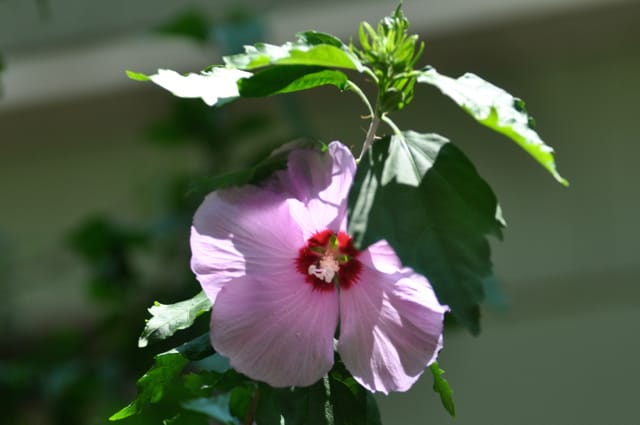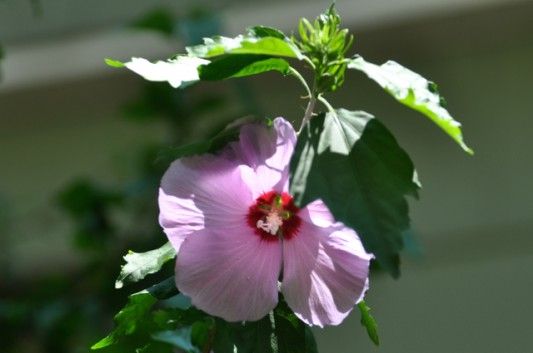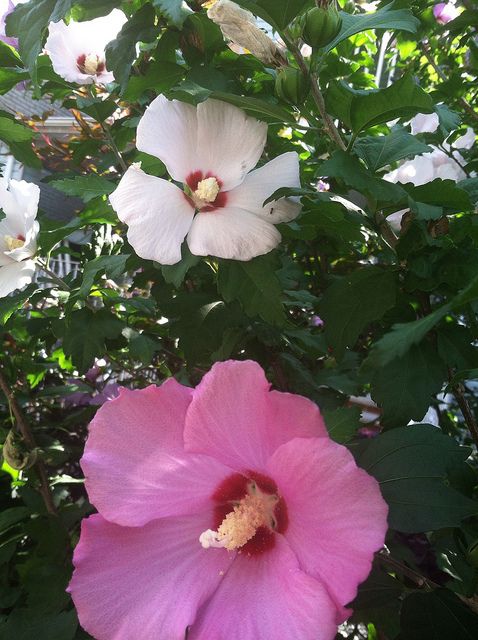Rose of Sharon


Rose of Sharon is blooming all over Ditmas Park brought out by heat and timing. If you are a botanist, you may know rose of Sharon as Hibiscus syriacus. Maybe you call her Shrub Althea, confusing her with the flower of mallow. Perhaps you’re of Korean decent; you may exalt her to Immortal Flower, Everlasting Flower, and crown her your national flower. Perhaps you’re a poet and sing her heart breaking love songs as Bob Dylan did, “She was the rose of Sharon from paradise lost.”
Whatever you call her, rose of Sharon technically isn’t a rose, she’s a hibiscus, and her blooms are just getting started. Perfect timing as most flowering plants are going to seed.

Taming the Rose
Rose of Sharon is easily trained to grow as a tree or an arch. Early spring and fall pruning is the key, so says the internet. I’ve spotted many rose of Sharon trees. Has anyone seen a rose of Sharon arch around the neighborhood?
Caring for Your Hibiscus
The Immortal Flower is such because it’s invasive. Yet, if you have one, care for it properly. Keep the moisture level constant by adding plenty of mulch and compost. Plant it in full sun. And be mindful of the seedlings it passes along.
Visitors
The fat blossoms are said to attract hummingbirds. I’m on a quest now to capture a hummingbird eating at a rose of Sharon.
The Everlasting Flower
She is the Everlasting Flower as firm evidence places her in Korea in the 14th century. (At least 100 varieties originate in Korea.) Some say it was the rose of Sharon King Solomon sang to in Song of Solomon 2:1 “I am the rose of Sharon, lily of the valleys.” (Some say the King actually sang to the crocus.) And the blooms do last forever–the shrubs continue to have blossoms well into the fall.
Rose of Sharon isn’t the only local plant that has roots in ancient times. Our springtime flowering magnolia trees sprung from ones eaten by dinosaurs. Our fig trees’ ancestors provided coverage for Adam and Eve. Does anyone own a forbidden fruit tree?




